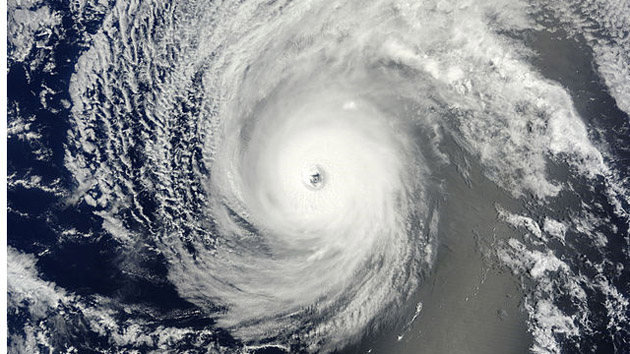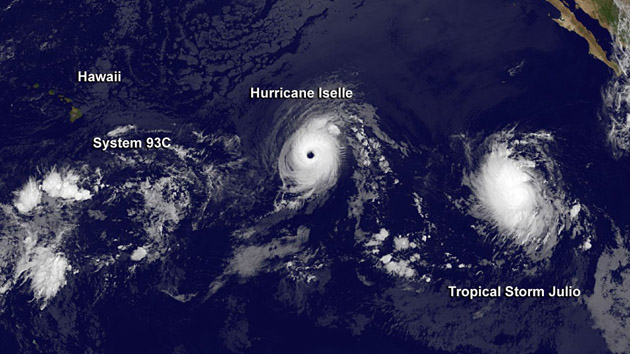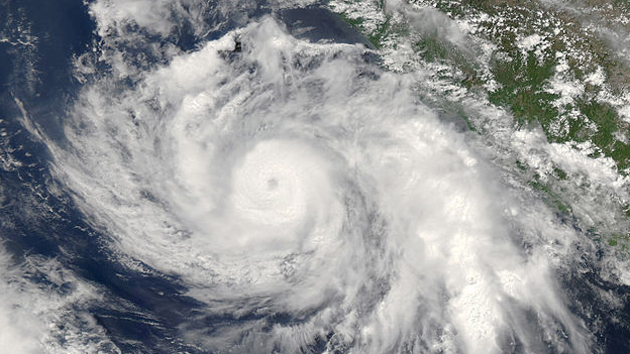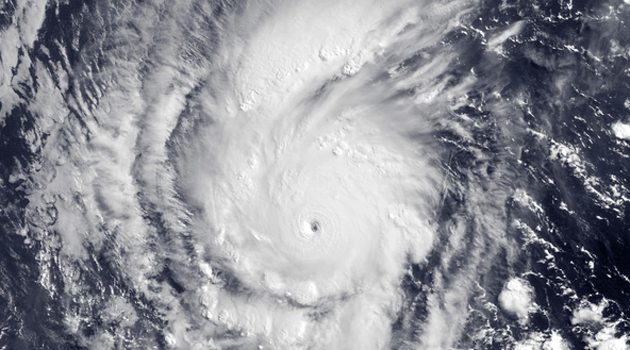
Hurricane Iselle on August 4. <a href="http://en.wikipedia.org/wiki/2014_Pacific_hurricane_season#mediaviewer/File:Iselle_Aug_4_2014_1940z.jpg">NASA</a>/Wikimedia Commons
It is not—yet—officially an El Niño year. However, we’ve already seen two El Nino-like hurricane records. And now, yet another atmospheric event reminiscent of El Niño conditions is unfolding in the Pacific Ocean: Namely, the Hawaiian islands are under hurricane threat.
Actually, it’s a double threat. Right now, Category 3 Hurricane Iselle is headed Hawaii’s way. Following closely behind is Tropical Storm Julio. The current forecast has Iselle hitting the islands as a strong tropical storm on Friday morning (if it stays a bit stronger, it could strike as a weak hurricane), and Julio arriving in the area as a Category 1 hurricane two days later. Look:

This situation is “unprecedented,” says top Weather Channel meteorologist Kevin Roth, who notes that in 1982—the closest analogy—two weak tropical storms arrived in Hawaii separated by 10 days. Adds Jeff Masters of Weather Underground:
It’s been a very active hurricane season in the Eastern Pacific, which has seen 10 named storms, 4 hurricanes, and 3 intense hurricanes so far in 2014. On average, we expect to see 6 named storms, 3 hurricanes, and 1 intense hurricane by August 4 in the Eastern Pacific.
The Eastern Pacific hurricane basin stretches from the western coast of Mexico out towards the Central Pacific north of the equator, where Hawaii lies. Hawaii is not officially located in the Eastern Pacific basin, though many storms that affect it start their life there and travel westward towards its islands. Once a hurricane moving westward crosses the 140th meridian west (a line of longitude running from Alaska down through the Central Pacific), its forecasting becomes the responsibility of the Central Pacific Hurricane Center located in Honolulu.
Hawaii’s worst hurricane in recent memory was 1992’s Hurricane Iniki, which also arrived in an El Niño year and struck Kauai with 140 mile-per-hour winds, causing over $3 billion in damage and six deaths.















